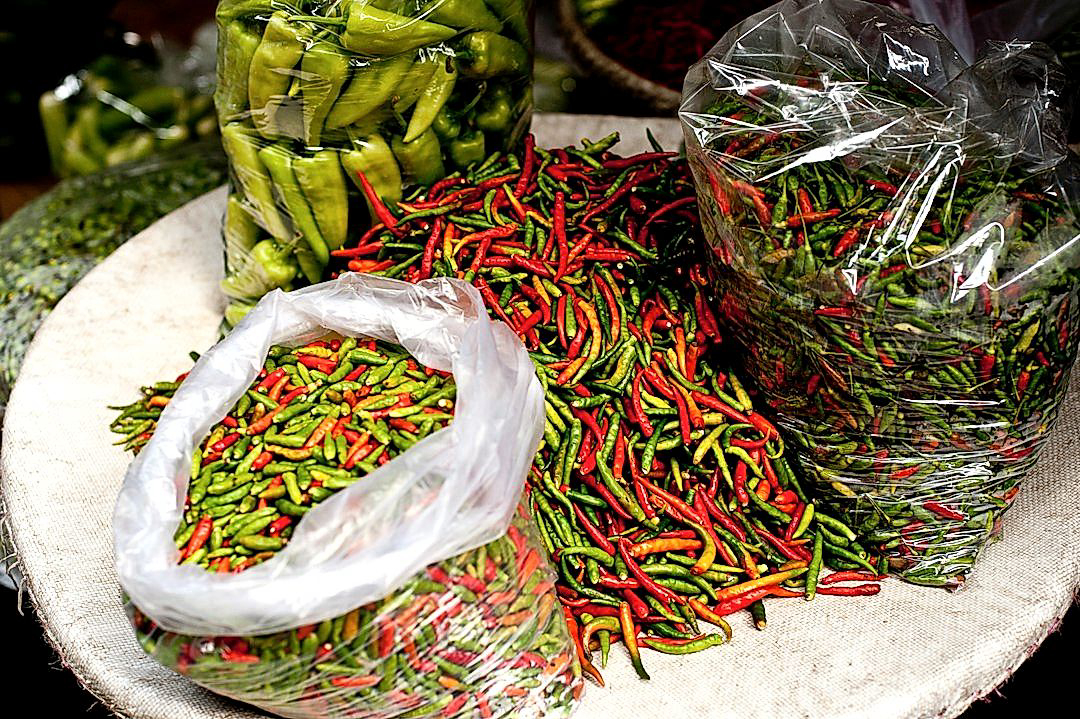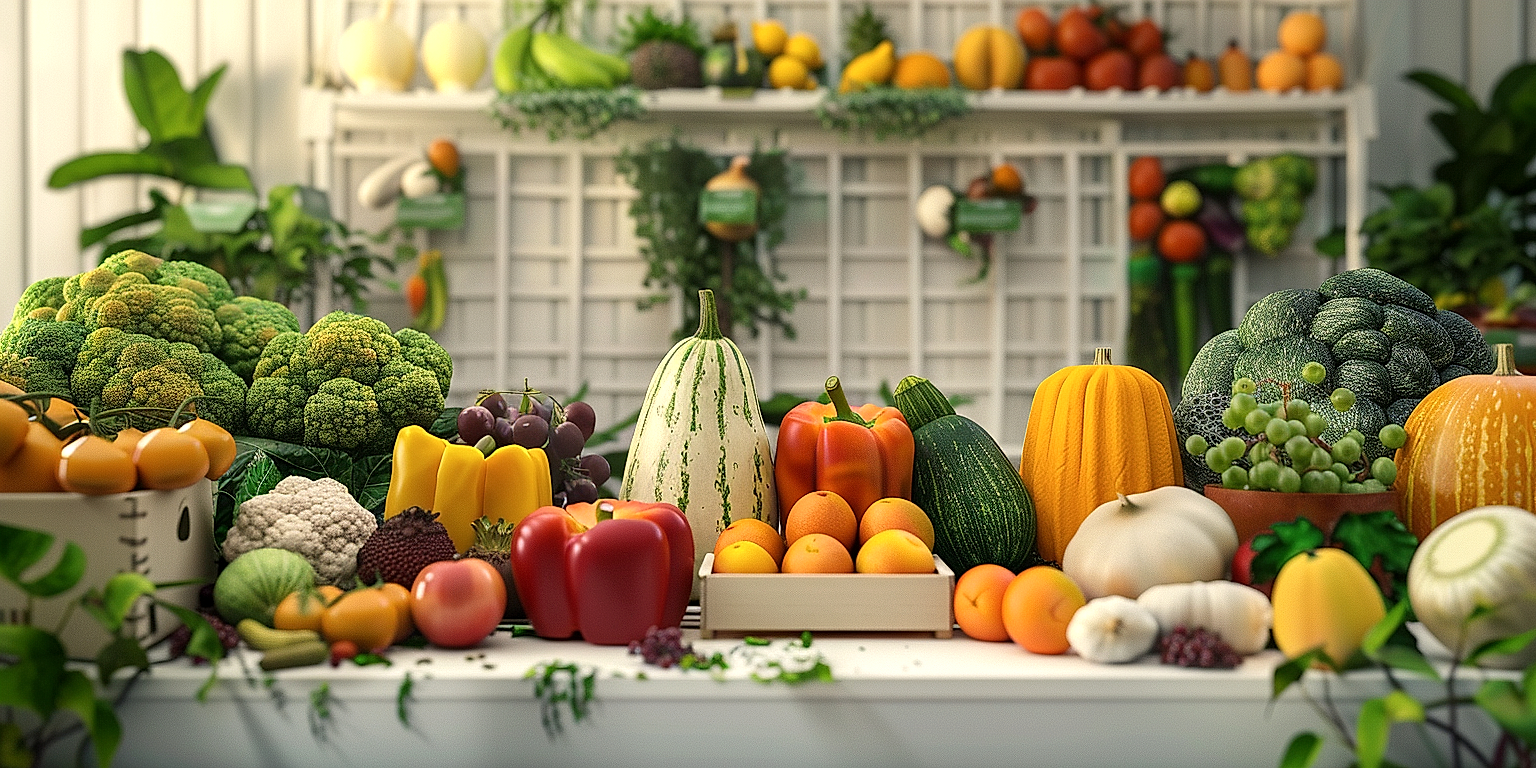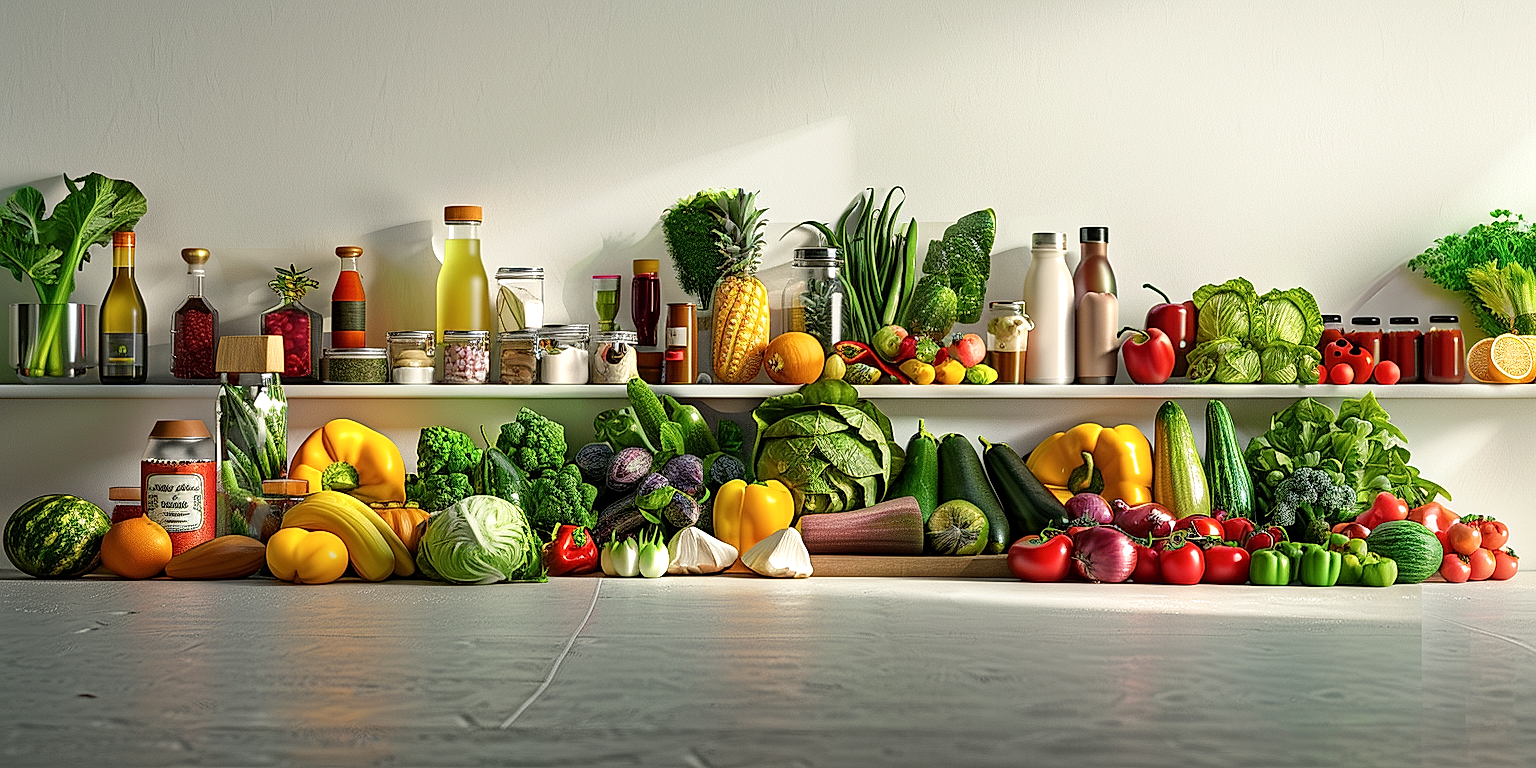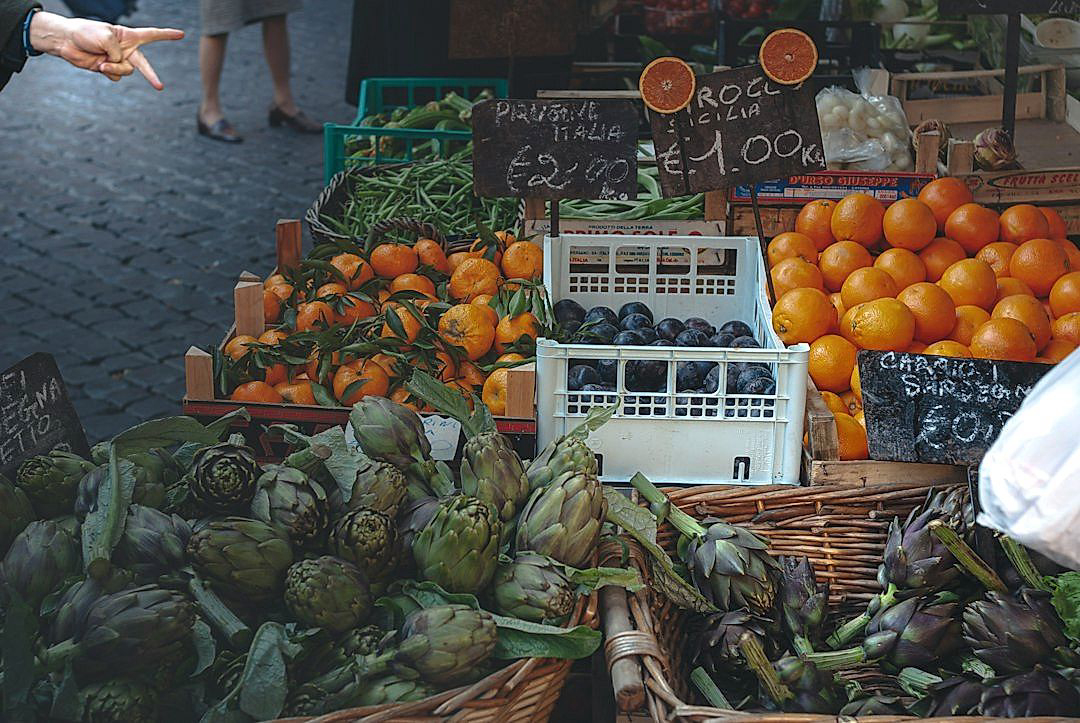In the bustling landscape of retail business, standing out becomes a crucial task.
Specifically for produce retailers, the presentation plays a significant role in driving sales and maintaining customer loyalty.
Harnessing the power of visual merchandising can turn your fruits and vegetables into eye-catching displays.
More than just aesthetics, it’s about strategic placement to attract and persuade customers to buy.
This article aims to deliver valuable insights to elevate your store setup.
Through purposeful visual merchandising, a surge in revenue and customer satisfaction awaits.
Visual Merchandising Tips For Produce Retailers
1. Highlight fresh, seasonal and locally sourced produce.
For any produce retailer, the prime factor to allure customers to your store is the freshness of your produce.
Keeping the produce fresh showcases the commitment of the retailer towards quality and the wellness of customers.
High-quality, fresh produce not only boosts the attractiveness of the store but also justifies the cost of the produce.
Keeping the produce fresh is not just a task but a commitment to the customer’s health and a nod towards seasonal and local agriculture.
Along with freshness, it’s essential to highlight the seasonal produce.
People tend to buy more of what is currently in season because of the taste, optimal nutrition values and lower prices of the produce.
Emphasizing seasonal fruits and vegetables can also drive spontaneous purchasing, which could significantly boost sales.
The local farmer’s market also plays a critical role in a produce retailer’s products.
Larger retail chains have used locally sourced produce as a content marketing strategy to attract conscientious customers who appreciate supporting local farmers and economies.
Locally sourced produce not only assures customers of its freshness but also indicates shorter supply chains, which means that the produce has likely been grown using fewer preservatives and chemicals.
Moreover, locally sourced products boost local economies and agriculture, giving customers another reason to support and shop at their local retailers.
Displaying these locally sourced fruits and vegetables on the display, accompanied by an explanation of how they support local farming and a low carbon footprint appeals to the customers.
It wouldn’t be wrong to state that ‘the more local, the more fresh and hence, the more it sells.’
A balanced mix of highlighting freshness, seasonal and locally sourced produce can make a retailer’s job half done.
By doing so, not only do the retailers benefit from increased profit, but they make a significant contribution to the betterment of local farmers, the environment, and the health of their customers.
This would be an effective strategy for a produce retailer aiming for long-term success while contributing positively to community and environment.
2. Ensure consistent restocking for fresh appearance
One of the critical tasks in maintaining a fresh and appealing appearance for your produce area is ensuring consistent restocking.
Retail customers are naturally predisposed to favor fresher-looking produce over ones that appear older or have been sitting on the shelf longer.
As such, one of the optimal ways to maintain customer interest and satisfaction is to make sure that there is a regular supply of fresh produce on your shelves.
Restocking isn’t just about replenishing inventory – it’s about revitalizing your display and ensuring it always looks its best.
Gone are the days when you could simply put produce on the shelves and leave them there until they’re sold.
Modern retail environments require proactive management, which includes frequent restocking and rotation of produce items.
This often means removing items that have started to look past their prime and replacing them with new, fresh items.
Although it may seem labor-intensive, this practice of culling – removing less-than-fresh products – is essential to maintain the overall freshness of your display.
This practice not only visually appeals to customers but also fosters a perception of quality and care for your inventory, which can increase customer satisfaction and loyalty.
Remember also that restocking isn’t just about quantity, but about quality as well.
High-quality produce, restocked regularly, will appeal more to customers and encourage them to come back to your store again and again.
During the restocking process, every effort must be made to ensure that the display remains attractive and inviting.
Even if it means adjusting the produce display layout or arrangement slightly, it’s important to maintain an aesthetic look.
Effective restocking therefore requires a detailed understanding of your inventory, attention to the freshness of your produce, and a vision for attractive merchandising.
By maintaining a regular restocking schedule, and ensuring that the produce you bring in is as fresh and appealing as possible, you can significantly enhance the appeal of your produce section.
Stay updated with suppliers’ schedules, seasonal variety availability, and do not ignore the importance of quality in restocking.
This, in turn, can translate into higher sales volume, customer satisfaction, and overall success for your retail business.
3. Use appealing, visually interesting color combinations.
An essential element of visual merchandising for produce retailers is the use of appealing, visually interesting color combinations.
The bounty of colors found in fresh fruits and vegetables provides an opportunity for retailers to create eye-catching displays that inspire customers to buy.
Pairing complementary colors, such as the vibrant red of tomatoes alongside the deep purple of eggplants, can result in a visually striking display.
Color blocking, or grouping like-colored items together, is a highly effective technique in visual merchandising.
Playing with contrasts and creating color harmonies can significantly impact the overall shopping experience and consequently, on sales. Visual merchandising helps your customer’s eyes rest and makes the buying decision easier.
Using color combinations wisely can both illuminate the natural beauty of the produce and guide the customers’ eyes around the store.
Retailers can also consider the use of seasonally relevant color schemes, for example, using warm oranges and deep reds during the autumn season.
Of course, maintaining the freshness of the produce is of utmost importance, as color vibrancy is directly connected to fresh produce.
Visual merchandising is not just about aesthetics. It can also be used to promote healthier choices by highlighting nutrient-dense, vibrant produce.
Color combinations can also be used to subtly suggest meals or flavor combinations, such as pairing the bright red of tomatoes with the vibrant green of basil, suggesting a classic Italian flavor profile.
Retailers should also consider the psychology of colors and how different colors can invoke different feelings and reactions. For example, warm colors like red and yellow are arousing, stimulating, and appetite-enhancing, while cool colors like green and blue are often seen as calming and comforting.
Visual merchandising with color is a never-ending experiment because the spectrum of potential combinations and effects is almost infinite. It’s all about capturing the customer’s attention and guiding their shopping journey in a way that is visually pleasing.
However, while the use of color is essential, it’s also crucial not to overwhelm customers with too much color. Using neutral colors such as wood tones or whites can help balance the vivid colors of the produce and make a more coherent and appealing sight.
Finally, while creating visually interesting color combinations, retailers must not forget the fundamental purpose of their displays: to showcase the fresh, high-quality produce they’re offering. So every color and positioning choice should ultimately serve to highlight the produce.
4. Clearly label and price all produce.
Operating a successful produce retail store involves taking several factors into account, but one of the most crucial factors that should never be overlooked is the proper labeling and pricing of goods.
Clear labeling not only enhances the shopping experience for your customers but also increases the efficiency of your store.
In the context of a produce store, labeling involves providing necessary information about the type of produce, its source, and other related details.
Every fruit, vegetable, or product in your store should be clearly identified with labels that are easy to read and understand.
Labels should include information like the name of the produce, the place where it has been grown, and potentially information about the farmer or company involved in its production.
Having clearly labeled produce not only grants the customer a better shopping experience, but also instills trust in your brand.
Along the same lines, the labels can also communicate the unique selling points of your products, whether they are organic, locally sourced, or packed with nutrients.
Small details, such as whether a product is gluten-free or high in antioxidants, can make a significant difference in the purchasing decisions of your customers.
For maximum effect, your labels should also be visually appealing and consistent with your store’s branding.
Furthermore, pricing is another crucial aspect that needs attention.
Make sure that all produce have their prices clearly indicated.
Customers should not have to ask for prices, as this could slow down the shopping process and potentially turn them off from making a purchase.
Accurate and clear pricing also reduces the likelihood of checkout errors and dissatisfaction.
Consider using digital price tags for better visibility and seamless updates.
In conclusion, clear labeling and accurate pricing are not just beneficial, they are essential for a successful produce retail store.
Your customers will appreciate the transparency and the ease of their shopping experience, leading to higher customer satisfaction and repeat business.
5. Utilize creative, theme-based displays for engagement.
As a produce retailer, one of the most powerful tools at your disposal for luring customers and driving sales is the creation of creative, theme-based displays.
When customers enter your store, their attention should be immediately drawn to the produce section not merely due to the freshness and quality of your produce, but also due to the visual aesthetics of your displays.
Consider creating a ‘farm stand’ theme by using rustic crates and burlap sacks to display your produce or a ‘garden’ theme by incorporating props like gardening tools and flower pots into your display.
The key to a successful theme-based display is ensuring that it visually connects with your customers and communicates a clear message about the freshness and quality of your produce.
Creative displays are not just about aesthetics, they’re about creating a story and a sense of connection that will resonate with your customers.
Additionally, these theme-based displays can help to create a more immersive shopping experience that keeps customers engaged and more likely to make a purchase.
Remember, the theme of your display should align with the current season or holiday. For example, during the autumn months, a ‘harvest’ theme could work well with pumpkins, apples and other fall produce.
Aside from season-based themes, you could also experiment with themes related to healthy eating, organic produce or locally-sourced produce, aligning with growing consumer trends and values.
Rotating your themes regularly can keep your produce section exciting and encourage repeat visits from customers who are curious about what they’ll find next.
While creating these displays, always keep in mind the functionality along with the aesthetics. Make sure the produce is easy to access, the labels are visible, and the pathways clear for customers to navigate.
Experimenting with different themes will allow you to see what works best for your specific customer base and your overall store layout.
It’s recommended to use professional merchandisers or design consultants for developing and implementing these themes as they have the skills and the expertise required to do it effectively.
However, don’t underestimate the ideas from your staff or customers, they might also bring innovative and fresh perspectives.
Lastly, do not forget to incorporate the right lighting as it can complement your theme and highlight your produce effectively.
With careful planning and creativity, your theme-based displays can become a significant drawcard for shoppers, setting your store apart from the competition and ensuring your produce is always perceived as fresh, appealing and worth buying.
The Bottom Line
Maintaining a successful fresh produce market place requires a well thought-out strategy.
It’s essential to have a strong emphasis on fresh, seasonal, and locally sourced produce.
Not only does this ensure quality, but it also enhances customer experience, contributing to the establishment’s reputation.
Moreover, consistent restocking and a vibrant color palette in the display help entice customers, stimulating purchases.
Clear labeling and pricing eliminate ambiguity, fostering trust with customers.
Lastly, using imagination and creativity to craft theme-based displays can stimulate customer engagement and keep them coming back for more.
Overall, these suggestions contribute significantly towards improving produce sales and in establishing a successful market place.




